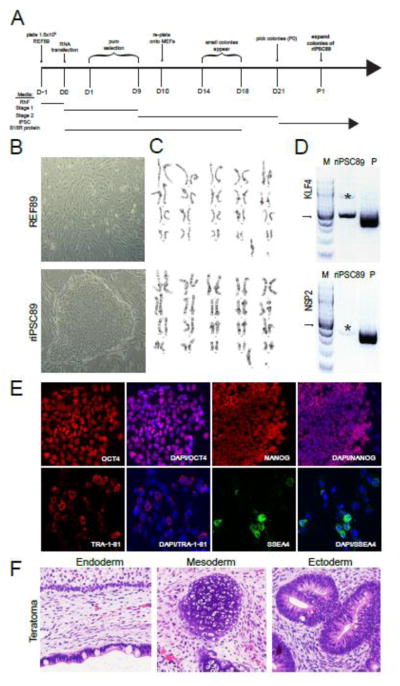Fig 1. Characterization of riPSC89.
(A) Timeline of events during the reprogramming REF89 fibroblasts and subsequent establishment and characterization of the riPSC89 cell line from a single colony. (B) Morphology of the REF89 (Fibroblasts) and a colony of riPSC89 (iPSCs). (C) REF89 and riPSC89 were karyotypically normal male (42, XY). (D) Non-integration after reprogramming confirmed by PCR of riPSC89 genomic DNA (500ng). The PCR product originating from endogenous KLF4 = 514 bp. The PCR product originating from reprogramming plasmid KLF4 = 418 bp. NSP2 is only present in the plasmid DNA and not riPSC89 gDNA (M=100 base pair marker with arrow pointing to 500bp, P=plasmid DNA)
*denotes a non-specific PCR band of incorrect size. (E) riPSC89 cells express markers of self-renewal such as OCT4 and NANOG, as well as, the cell surface proteins SSEA4 and TRA-1-81. (F) Pluripotency of riPSC89 was confirmed using a teratoma assay, which contained cell types representing endoderm, mesoderm and ectoderm.

